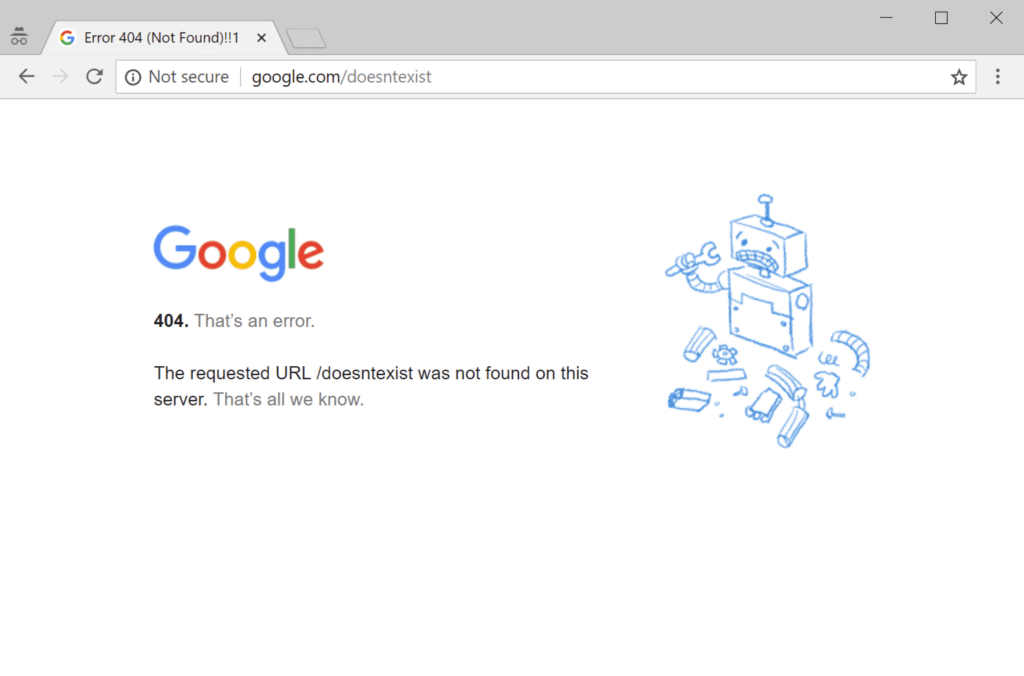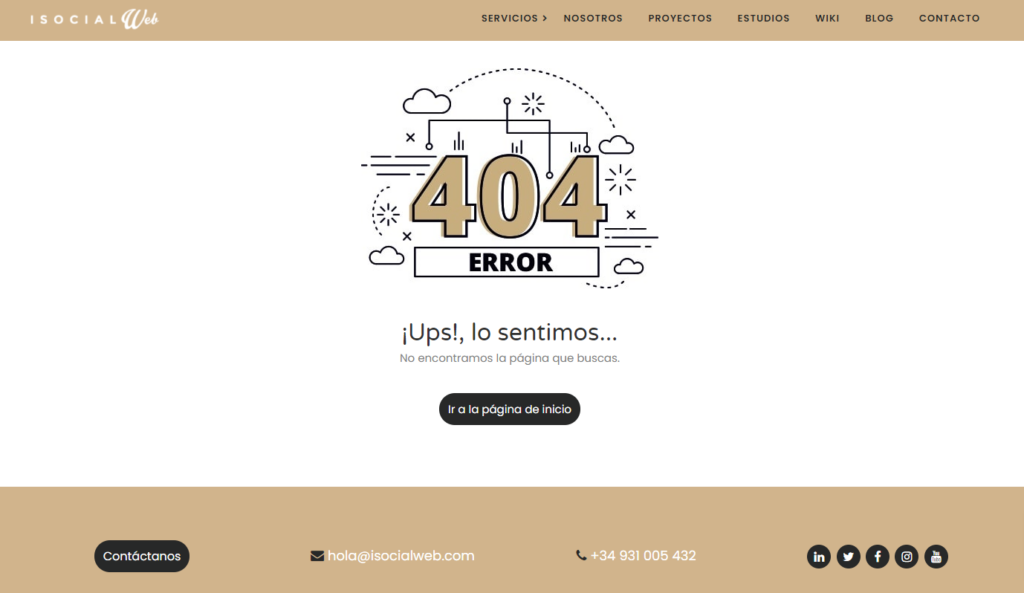Table of contents
What is 404 not found?
A 404 error or “page not found” is a standard Hypertext Transfer Protocol response code indicating that the server could not find the content requested by the browser. This message usually appears when the server is unwilling to disclose the requested information or when the content has been removed.
To be clear, the 404 error indicates that although the server itself is accessible, the specific page displaying the error is not.

Why it is important
404 error pages alone do not really harm the SEO of a website. In fact, it is normal for some pages to cease to exist, and Google says so…but it is important to keep an eye on these types of errors and not lose sight of them.
The constant appearance of the same errors over and over again or in a significant volume can negatively affect the user experience.
And search engines track this experience by removing non-compliant pages from their results.
For this reason, it is important to identify them and know the cause behind them in order to know how to act.
How to Identify 404 errors
The main thing to do when solving 404 errors is to identify them.
Many times users mistype the address of a web page and get a 404 error response.
This type of error is not caused by our negligence.
Therefore, what we recommend you to do is to check your entire website for these errors.
Above all, we are interested in identifying:
- Pages of our property that we have deleted and are still linked internally.
- The pages of our property that we have deleted are still linked externally.
- External links from our site to content removed by other webmasters.
External links from our site to content removed by other webmasters.
Any of these tools will help you to detect the 404 not found errors on your website and decide what to do with each one of them.
What to do with 404 not found errors
Believe it or not, this is what Google says about 404s:
“In general, 404 errors do not affect the search performance of your website and you can safely ignore them if you are certain that the URLs should not exist on the website. It is important that you check that these and other invalid URLs return the appropriate HTTP 404 response code and are not blocked by the website’s robots.txt file.”
Therefore:
- 404s should not always be redirected.
- 404s should not redirect globally to the home page.
- 404s should only redirect to a category or home page if that is the most relevant experience for the user.
It is OK to display a 404 when the page no longer exists and there is no content to replace it.
Google will already take care of removing it from its index.
On the other hand, if these pages that no longer serve content have inbound links from other domains that bring qualified traffic or authority, then consider redirecting them to another URL that makes sense for the user, or contact the owners of these pages to convince them to remove the links and point them to another URL within the domain.
Finally, if your website has broken links to other domains, we always recommend replacing them with others.
This way if someone clicks on them you will avoid that they find a 404 not found error.
Personalize your Error 404 page
It is considered good practice to customize your 404 error page. As we have done on our domain:

This does not prevent the 404 error from ceasing to exist. But it lets the user know that there is an error in his request. This way we let them know that they may have mistyped the URL, that our page is temporarily unavailable or that the page no longer exists. The interesting thing about having an effective 404 page is that the user will recognize the error and we can guide them back to the relevant pages of our site instead of them closing the window or navigating away where they can find useful and potentially relevant resources on another page.
Errors similar to error 404
Some other client-side error messages related to the 404 not found error include:
- 400 Bad Request.
- 401 Unauthorized.
- 403 Forbidden.
- 408 Request Timeout.
There are also several server-side HTTP status codes, such as the popular 500 Internal Server Error. Here is a comprehensive list of HTTP Status Code Errors..
In Conclusion:
404 error pages do not necessarily hurt your domain’s SEO. As a general rule, most errors will go away over time unless they are linked from other locations on your website and receive regular traffic. However, there are many things you can lose if you don’t fix them. If you have backlinks pointing to pages on your site that return a 404, try to fix those backlinks by pointing them to other content on your site by contacting the owners of those pages, or 301 redirect the broken URLs to a location with relevant content for the user. Important: remember to remove all broken links from your site. We don’t want to deliver a bad user experience.
Recommended links and reading:
Frequently Asked Questions
An error 404 on a web page is one of the most common errors we can encounter as webmasters. It has important SEO implications and accumulating many of these errors can affect Google rankings. Knowing how to deal with them is essential to monetize your efforts. In our wiki, you will find out how to identify and fix these errors.
If you find any page on your website with broken links the best option is to correct or remove them. Consider whether it is necessary to restore the old page, replace the link with another one or simply delete it. If you see the same 404 error repeated many times due to a deleted page, consider redirecting to new and related content.
